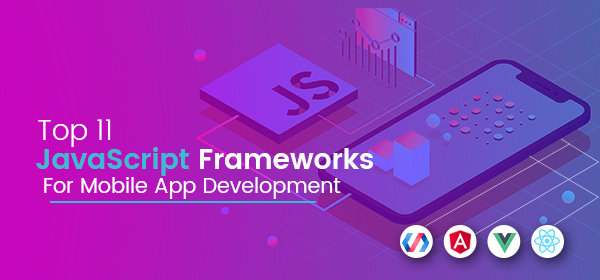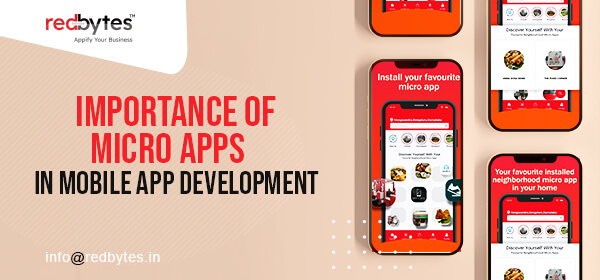Mobile apps have been around for almost a decade now, which means technology lovers are highly acquainted with what they are presented with in terms of digital solutions. In order to remain updated, informed and strongly connected at any given place and time, users need smart mobile apps that deliver solutions with minimal interactions.
While futuristic technologies like Artificial Intelligence, Machine Learning and IoT have transformed the conventional face of mobile apps, users are expecting to have even smarter and more evolved mobile applications, tossing more intense challenges down the path of mobile app developers.
Let us take an unbiased glance at all possible challenges mobile app developers are most likely to face in today’s time.
1. Innovative Elements That Beat The Competition
The crucial stage of mobile app consultation is when you have to make a very pivotal decision of winning the target audience and overpowering the competition.
Finding the correct field of interest and ensuring your app will be successful enough to beat the competition is a work of diligence.
In the industry that is known for changing trends and giving rich user experience, developers must have superior talent to outperform the similar products in the App stores.
The challenge is to overcome the pressure of developing the most original, aesthetic and innovative application, the one that people can notice and embrace for lifetime.
2. Optimizing The App For all Devices and Mobile Screens

From Android to iOS and Windows, all devices come with various screen size and resolutions, each offering unique environment and ecosystem for developers to work on. For developers, the challenge is to create apps that perform exquisitely across all device screens.
Each time they build an app, it becomes important to meet the unique requirements of target devices while optimizing the app for different screen sizes.
3. Keeping the Mobile App Clean and Relatable
As there are many applications in Google Play Store and Apple App Store, it is essential for mobile app specialists keep the app as clean and clutter-free as possible.
Here the challenge is to make sure the application should be self-explanatory. In case the app does have certain unknown elements, they need to include quick guide so that end users can get on with your app and jump right in without much time.

Apart from this, it is also advisable to maintain the relevance of the app for the target audience, considering the fact that users want to explore the features that they find highly relatable.
4. Battery Life vs. App Performance
Device battery life is something that has to be considered with utmost sincerity as users don’t want to experience the instances of overheating or overmuch power consumption while they use your app. People who still use previous versions of device OS are often subject to battery life issues.
Developers therefore test battery performance for their app by releasing Beta version and check whether the app drains the device battery too quickly.
Based on the feedback, developers run a second check and tweak the features to ensure the app retains battery performance. The challenge here is to design a bug-free, high-performance app that doesn’t devour excessive power.
5. Simplicity of Design and Use
Users have a general tendency to relate with those apps that are easy to use and understand. Mobile app fanatics would never appreciate heavy complexity of design and will switch to other apps that are simple in use.
Developers are expected to focus on building an app that has simple design yet offers incredible user experience with personalized features and functionality. Thus, combining simplicity with engaging user experience is another challenge for them.
6. Volatility and Limited Lifecycle
The problem with most digital solutions is that it remains predominant and appreciated until a bigger player conquers the mobile app market.
Mobile technology is constantly evolving and so is user behavior, which means there will always be a fair chance that your app has limited lifecycle.
This suggests that developers have to be creative enough to launch a substantial and highly sustainable product that can combat market volatility for similar apps.
7. Changing Mobile Apps Ecosystem
Today’s best mobile technology is likely to become tomorrow’s past phenomenon. This is because along with mobile development technologies, hardware and software ecosystem of digital devices often experience frequent updates in regular intervals.

In this dynamic situation, mobile app developers find it hard to cope with design and testing the app for heterogenous device environments. This poses as another tough challenge for even the most talented mobile app developers.
8. Making it Outstanding
Mobile app stores are deluged with great many numbers of apps. Even the app you are planning to build may already have its hundreds of competitors. More apps keep hitting the online store everyday. How can you make sure your app will end up on users’ mobile screen?
You must delve deep into latest needs and how user behavior is changing in order to create something that stand out from the crowd and receive impressive response. Making the app unique and different from others is a real challenge for developers.
9. Interactive UI
Not every app downloaded by users stay permanently on their mobile screen. This is why professional mobile app developers must gravitate towards the concept of making user interface more appealing. A mobile app with attractive and expressive UI makes for the most usable apps.
Mobile devices have built-in sensors integrating which developers can make the apps more lively and interactive. However, this again swoops down as a challenge on developers’ shoulder as it consumes a lot of time making such features work.
10. Establishing an Instant Connection With End Users
The key to survival in the mobile application market is to release an app that instantly connects with end users. The best way to achieve this goal is to continue to evolve the features and adopt an innovative approach for creating the exemplary features.
If your mobile app fails to connect with users, the entire purpose of investing efforts and money will go in vain. Also, the job of developers involves being accessible and taking in all the comments and feedback shared by users and rectifying the bugs that practically hinder the user experience. Building an unblemished relationship with end users from the beginning phase is a cumbersome process for developers.
11. Mobile app Marketing and Promotion

Mobile app marketing is the key to growing awareness and visibility for mobile apps in the app stores and eventually impacts the app success. Developers need to opt for extensive marketing and promotion strategy to obtain massive response from the target users.
However, for developers to jump into the role of marketer is a great challenge since they need to learn all the principles of SEO and ASO and online affiliate activities.
One easiest way to diminish the challenge is to approach a successful creative marketing and ad agency who can help app development companies aggressively market their new apps and earn thick volume of traffic.
Conclusion
With technology landscape for mobile app development getting mighty hard for developers to keep up with, they must pull up their sleeves to confront intimidating challenges. However, there is no denial that these challenges do present boundless opportunities to build excellent user experience for their mobile app.
Surpassing these challenges with technological insight and versatile skillset gives mobile development experts a strong competitive edge and helps them build expansive user base.
































